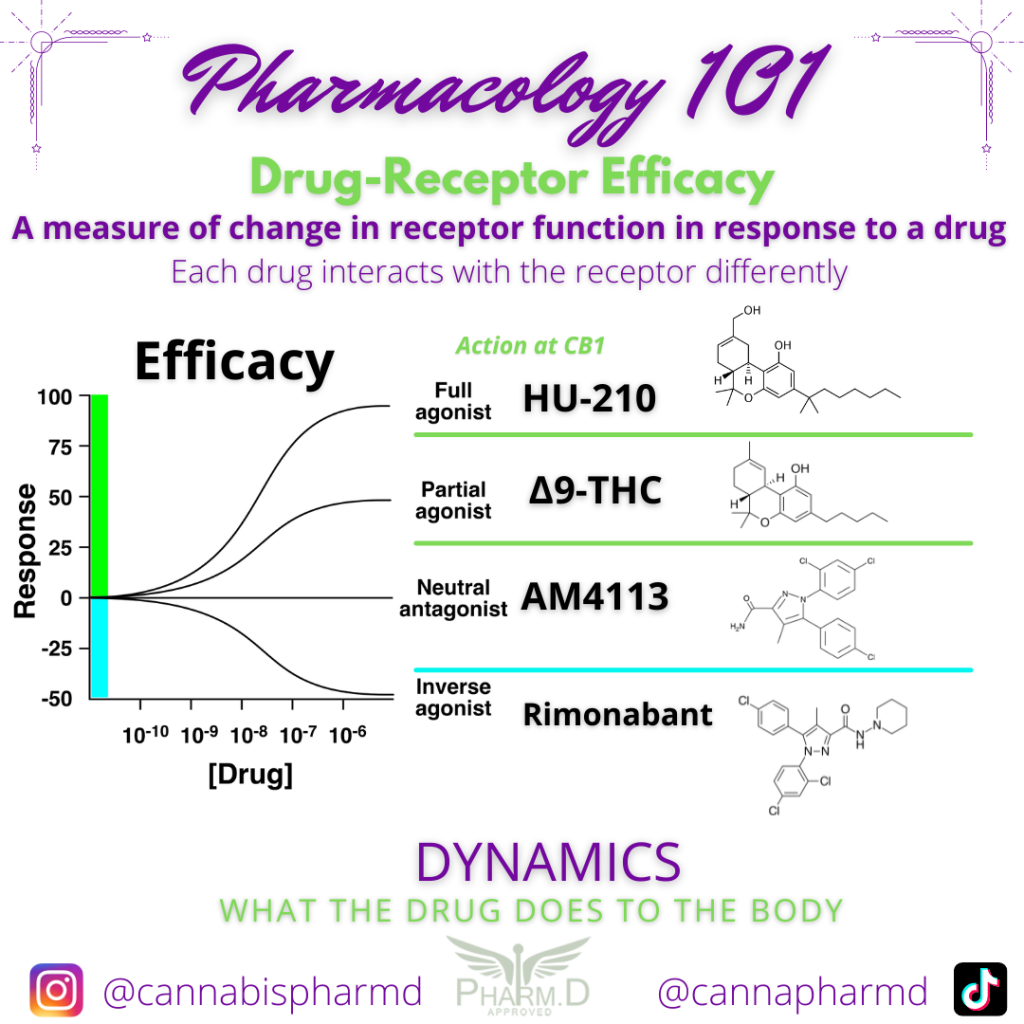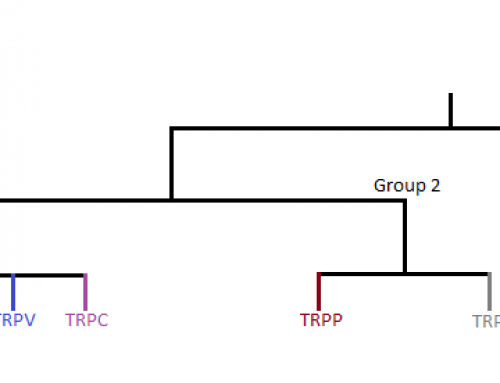Hey all, it’s Codi your cannabis pharmacist.
Thanks for tuning in to another one of my blog posts! I don’t always get around to writing you a blog post, often just opting for some social media posts. But here on my blog you will be able to read all of what I want to write in long-form. Sometimes that means excessive words and rambling, and other time that means more elaboration, details, and pharmacology fun!

Pharmacology 101 – PharmacoDYNAMICS – Efficacy
Efficacy is a measure of receptor activation. It represents the amount of change in the receptor from rest (baseline) to activated. This activation can vary dramatically based on small changes in the shape of the drug.
Imagine it like this: The receptor is a lock, and the drug is a key, and efficacy is how far the key can turn within the lock.
The info-graphic shows how different drugs (keys) can produce profoundly different actions at the receptor (locks), depending on their shape. Very much like the notches in a key interacting with a lock in a door. Efficacy of a drug represents the max amount of activation the drug can cause at a receptor–or how far the lock can turn given the specific key.
Affinity (covered in last post) is a measure of attraction between the key and the lock. High affinity alone does not predict the response toa drug! It is only one factor in the whole pharmacologic process
Efficacy is a measure of activation. Or, in other words, a measure of how far the key will turn the lock.
Full Agonists – Fit into lock and turn the key all the way. Full agonists may be helpful sometimes, but they can often cause a down-regulation of the receptors.
HU-210 – a synthetic cannabinoid with full-agonist properties. By strongly activating CB1, HU-210c carries higher risks of adverse effects like sedation, imbalance, ataxia, and psychosis
Partial agonists – Fits into the lock but cannot turn the key all the way. The key will only turn somewhat, which leads to a different cellular response than a full agonist
THC – everyone’s favorite cannabinoid! This drug engages the CB1 receptor but cannot fully activate it. This may be why THC has such a tremendous safety profile and commonly exhibits a “ceiling” where you cannot get any higher.
Antagonist – Key fits into the lock, but it cannot turn. This key simple finds its way to the lock, inserts itself, but doesn’t turn at all– thus blocking the receptor site but having no direct action. Technically antagonists have no efficacy.
AM4113 – a synthetic CB1 antagonist, this drug can block other drugs from interacting with the CB1 receptor, but doesn’t produce an opposite response like the inverse agonist (which can be helpful sometimes!)
Inverse agonist – As the name suggests, this key fits into the lock, but activates it in the opposite way than a traditional agonist. These drugs have inverse efficacy
Rimonabant (SR141716) is an inverse agonist at CB1. This drug was approved in Europe for obesity/metabolic syndrome and it worked! It was approved for use in Europe in 2006. The problem with this drug was that not only did it reduce appetite, but it also had a negative effect on mood. It’s use, a CB1 inverse agonist (think the anti-THC molecule), was found to cause anxiety, depression, and even suicidality. It has since been removed from the European market.
Phew! Did you get all that?! Maybe this one is more like pharmacology 202.
Ask whatever questions you may have in the comments. Like and share to show your support.
The next topic I will cover is POTENCY — a combination of affinity + efficacy. Potency is a frequently confused with affinity–but they are not the same! Stay tuned for more on this topic!



